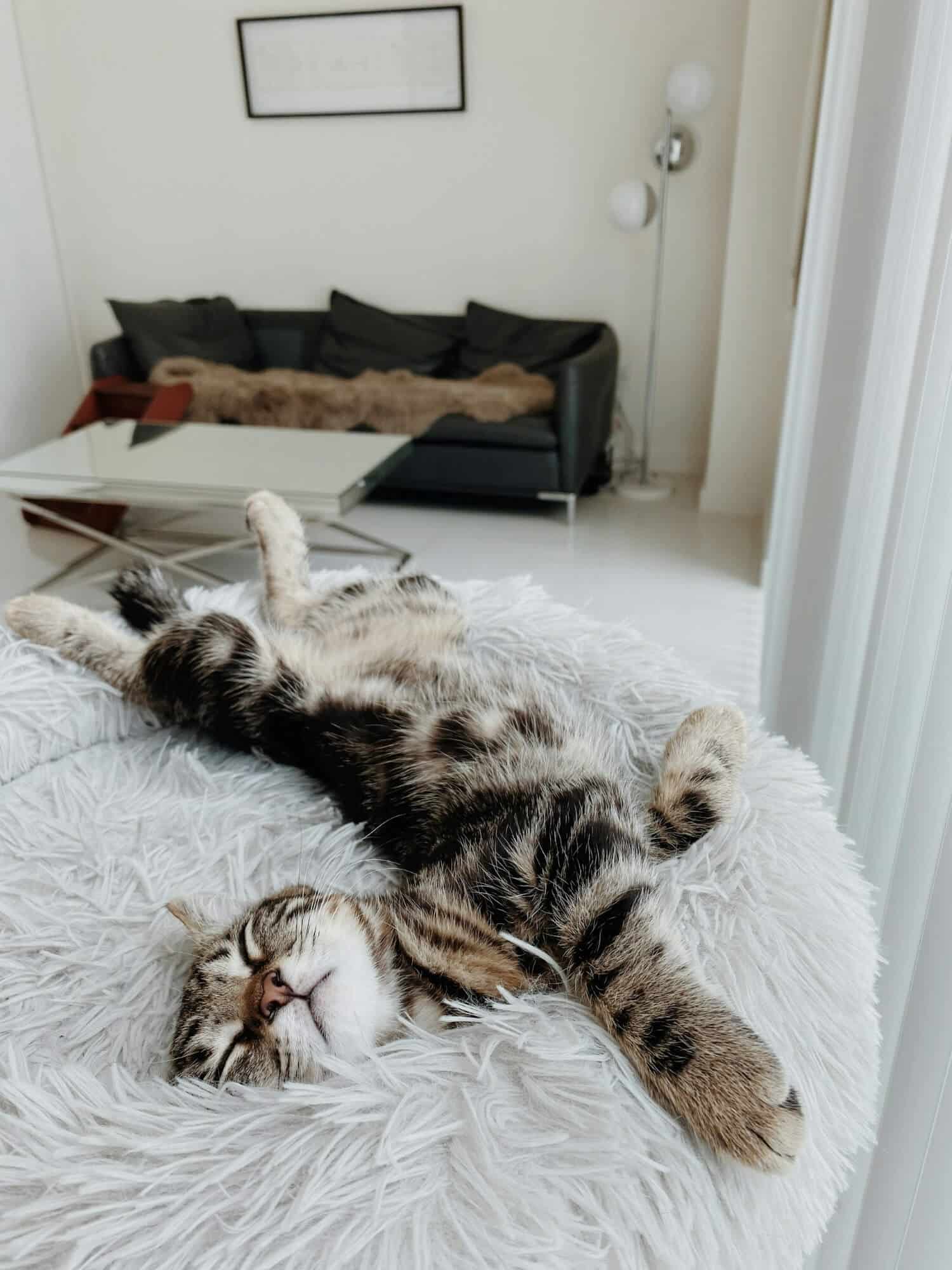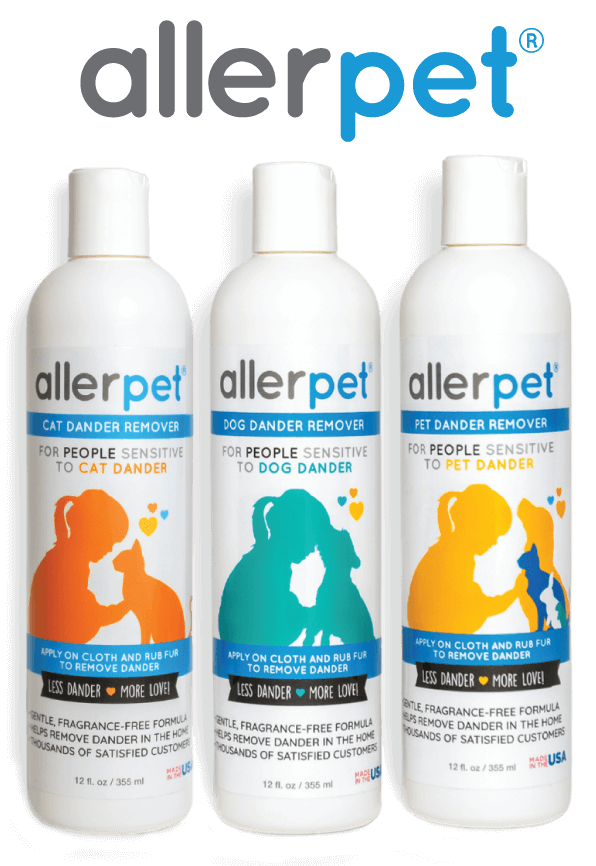General Pet Care & Habitat
An Introduction To Minimizing Pet-Related Allergy Problems
Recent Studies
Recent studies indicate that you can significantly decrease the amount of pet-related and other airborne allergens in your home by taking certain actions which, depending on the degree of suffering, include grooming your pet regularly to help remove dead hair and dander, periodically cleansing your pet’s hair, fur or feathers, keeping the pet out of your bedroom, clearing the air with a HEPA (High Efficiency Particulate Air) filter, vacuuming with an allergy vacuum cleaner, and keeping house dust to a minimum. To begin, here are suggestions that pertain in general to all hairy, furry or feathered pets. Specific advice concerning cats and dogs, birds, rabbits and ferrets, and small furry pets such as gerbils, guinea pigs, mice and rats follow this section, as do suggestions for reducing allergens throughout your home.

The Importance Of Grooming And Cleansing
The first and most important step to help control the dispersal of allergens into the atmosphere is to make your pet less sensitive by regular grooming and cleansing. Remember: it’s not pets themselves – dogs, cats, birds, rabbits, gerbils, guinea pigs, hamsters, mice, rats and ferrets – that cause your sensitivities. It’s the tiny specks of dander that are shed from their skin, and the sebaceous gland, salivary and urinary secretions that dry on the hair and become airborne.
When Pets Are Neglected
When pets are neglected, their allergens become airborne as microscopic particles in large quantities which, depending on particle size, float in the air for hours, or settle into carpets and soft furnishings throughout your house. The cat allergen Fel d1 becomes airborne on small particles which remain aloft for long periods, while larger particles – dust and pollen, for instance – settle to the ground within minutes. This is the major reason for the rapid onset of symptoms when an allergic person enters a home in which a cat lives. Even when a pet, especially a cat, is removed from a house, it takes many months to remove their Fel d1 allergens because they have accumulated in the carpets, sofas, chairs and other reservoirs. A study published in the Journal of Allergy and Clinical Immunology found that, because of its sticky nature, Fel d1 is even present on walls and ceilings of rooms and in homes as well as other buildings where no cat has been present.
Why Regular Grooming Is Necessary
When pets are neglected, their allergens become airborne as microscopic particles in large quantities which, depending on particle size, float in the air for hours, or settle into carpets and soft furnishings throughout your house.
The cat allergen Fel d1 becomes airborne on small particles which remain aloft for long periods, while larger particles – dust and pollen, for instance – settle to the ground within minutes. This is the major reason for the rapid onset of symptoms when an allergic person enters a home in which a cat lives.
Even when a pet, especially a cat, is removed from a house, it takes many months to remove their Fel d1 allergens because they have accumulated in the carpets, sofas, chairs and other reservoirs.
A study published in the Journal of Allergy and Clinical Immunology found that, because of its sticky nature, Fel d1 is even present on walls and ceilings of rooms.
When pets are neglected, their allergens become airborne as microscopic particles in large quantities which, depending on particle size, float in the air for hours, or settle into carpets and soft furnishings throughout your house.
While an animal’s hair or fur is not a major allergen, it does serve as a carrier. In addition to the pet-related allergens mentioned in the introduction, it also can collect dust, pollen, mold and other irritants, which is another reason for cleansing, either by wiping the animal with Allerpet or by bathing it.
You can additionally reduce allergy symptoms by scrubbing your hands immediately after direct contact with your pet (handling and stroking it, for instance), after cleansing the litter box and after cleansing the pet’s bedding or cage. Wash, too, if your pet deposits saliva on your skin, as many people develop symptoms after being licked by a dog or cat. Avoid touching your face before you wash, especially the skin around your eyes and nose since these areas are extremely sensitive.
When you groom or cleanse your pet, your clothing also collects whatever allergens the animal sheds. Choose something that is easy to wash, like a smock or old clothes made of cotton and change as soon as you have finished.

General Suggestions Around The House
If you own a dog or a cat, train it to sleep in its own bed with its own washable cushion or blanket. If the pet uses a particular chair or sofa as a resting place, it will help to cover that piece of furniture with a towel or sheet. Wash the pet’s bedding or furniture covers regularly in hot water; dry at the warmest setting to eliminate the dander. Vacuum the bed and the surrounding areas often. Animal allergens, however, are nearly impossible to capture with a conventional vacuum. Their filtering systems are only capable of retaining large particles when the much smaller particles (like Fel d1 and dander) are the ones that aggravate pet allergies.
Conventional vacuums do pick up small irritants, but they blow them through the exhaust outlet right back into the air. The particles that escape re-circulate in the air to be re-inhaled, or to settle again into the carpets, furniture or draperies. Many companies now manufacture vacuum cleaners that are designed for allergy sufferers. These are machines with ultra-fine HEPA filtration capabilities that will contain even the smallest microscopic particles.
HEPA (High-Efficiency Particulate Air) filters remove 99.97 percent of all airborne particles larger than 0.3 microns in diameter. You may also be able to turn your conventional vacuum into a “cleaner air” machine by using special disposable electrostatic bags. These are available for a number or upright or canister model machines.
Keep your pets out of your bedroom. Don’t ever allow your dog or cat to sleep on your bed, and do not keep the cages of small furry pets or birds in your bedroom. Experts say that when allergy sufferers breathe “pure” air for 8 to 10 hours each night, they can probably tolerate more exposure to allergenic substances during the day. If you are away during the day, be sure to keep your bedroom door closed to prevent pets from napping on your bed. If possible, install and run a HEPA room air cleaner in your bedroom while the door remains closed during the day.
Experts say that when allergy sufferers breathe “pure” air for 8 to 10 hours each night, they can probably tolerate more exposure to allergenic substances during the day.
Proper ventilation can also help to lower the concentration of pet allergens. Poor air distribution throughout a home is a major factor contributing to the buildup of indoor airborne allergens, pet or musty odors, mildew and the resulting health problems. EPA studies indicate that indoor air is often more polluted than outdoor air. To encourage natural ventilation, whenever the weather is suitable, open several windows (screened, of course, to prevent pets from escaping) for a short time each day to draw in fresh air.
As far as general cleaning is concerned, ideally someone other than the allergy sufferer should do the necessary dusting. If that’s not possible, the allergy sufferer should wear a protective mask that covers the nose and mouth to avoid inhaling heavy doses of allergens. Be sure to use damp cloths or special dusting sprays or cloths and mops that retain dust without stirring it up. Finally, don’t forget locations in your home where pet and dust mite allergens are frequently overlooked… upholstered furniture, curtains and draperies, for instance.





